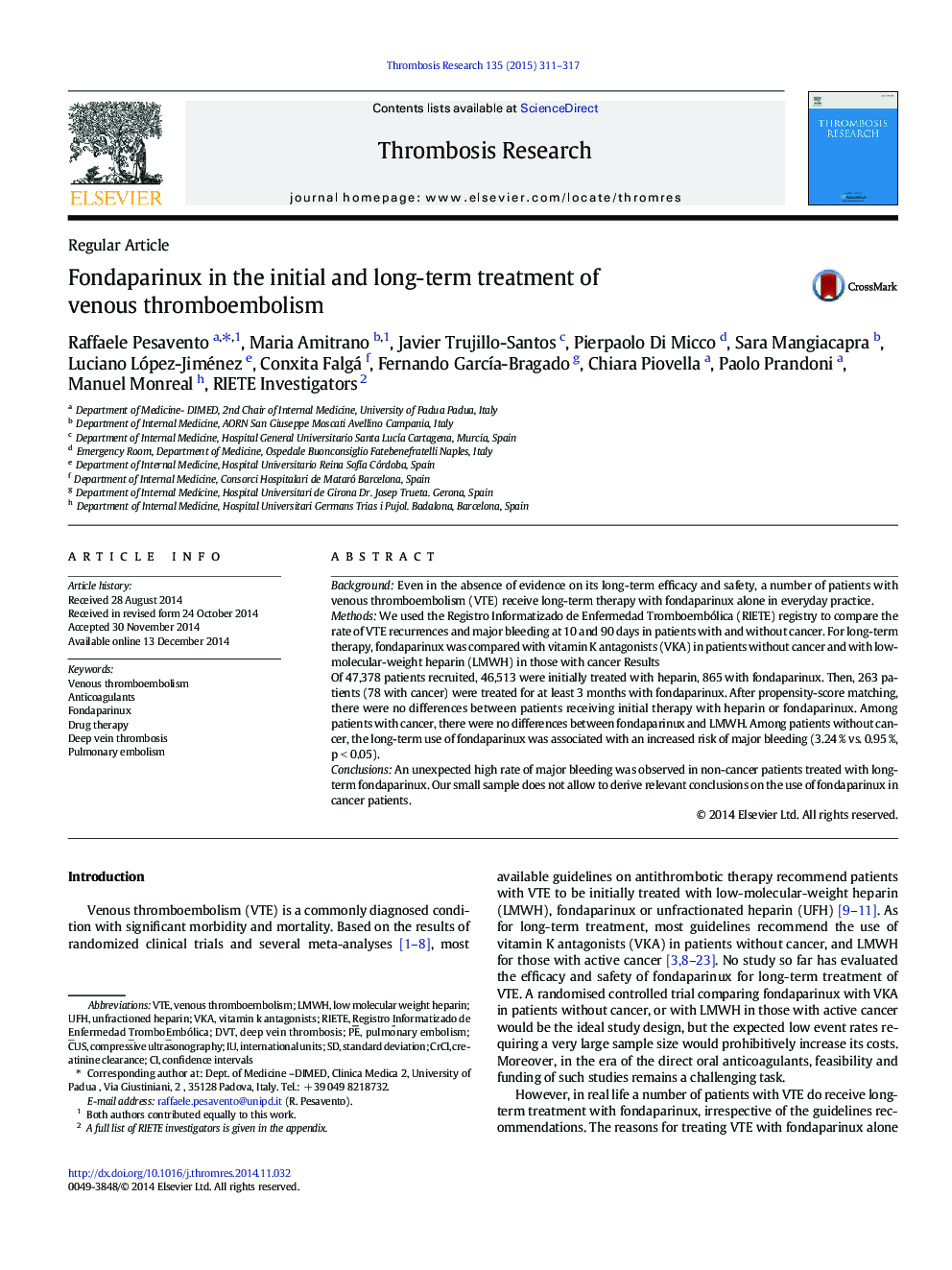| Article ID | Journal | Published Year | Pages | File Type |
|---|---|---|---|---|
| 6000714 | Thrombosis Research | 2015 | 7 Pages |
â¢We evaluated the outcome of long-term therapy with fondaparinux in VTE patients.â¢The 10-day outcome was similar to that of patients treated with heparins.â¢The 90-day outcome was similar to that of cancer patients treated with LMWHs.â¢A 90-day high major bleeding rate was observed in non-cancer fondaparinux patients.â¢No relevant conclusions can be derived on the few enrolled cancer patients.
BackgroundEven in the absence of evidence on its long-term efficacy and safety, a number of patients with venous thromboembolism (VTE) receive long-term therapy with fondaparinux alone in everyday practice.MethodsWe used the Registro Informatizado de Enfermedad Tromboembólica (RIETE) registry to compare the rate of VTE recurrences and major bleeding at 10 and 90 days in patients with and without cancer. For long-term therapy, fondaparinux was compared with vitamin K antagonists (VKA) in patients without cancer and with low-molecular-weight heparin (LMWH) in those with cancer ResultsOf 47,378 patients recruited, 46,513 were initially treated with heparin, 865 with fondaparinux. Then, 263 patients (78 with cancer) were treated for at least 3 months with fondaparinux. After propensity-score matching, there were no differences between patients receiving initial therapy with heparin or fondaparinux. Among patients with cancer, there were no differences between fondaparinux and LMWH. Among patients without cancer, the long-term use of fondaparinux was associated with an increased risk of major bleeding (3.24 % vs. 0.95 %, p < 0.05).ConclusionsAn unexpected high rate of major bleeding was observed in non-cancer patients treated with long-term fondaparinux. Our small sample does not allow to derive relevant conclusions on the use of fondaparinux in cancer patients.
